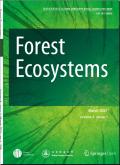The origin and beginnings of modern Continuous Cover Forestry in Europe
IF 4.4
1区 农林科学
Q1 FORESTRY
引用次数: 0
Abstract
Background
Continuous Cover Forestry (CCF) is a type of forest management that is based on ecological, environmental, and biological principles. Specific definitions of CCF greatly vary and the concept usually includes a number of tenets or criteria. The most important tenet of CCF is the requirement to abandon the practice of large-scale clearfelling in favour of selective thinning/harvesting and natural regeneration methods.
Methods
CCF is commonly believed to have its main origin in an academic debate that was conducted through publications in a number of European and North American countries towards the end of the 19th and the beginning of the 20th century. Our findings are exclusively based on a literature review of the history of CCF and they revealed that the European origins of CCF go much further back to a form of farm forestry that started to be practised in Central Europe in the 17th century. Eventually, this type of farm forestry led to the formation of the single-tree selection system as we know it today. Another influential tradition line contributing to modern CCF is individual-based forest management, which breaks forest stands down into small neighbourhood-based units. The centres of these units are dominant frame trees which form the framework of a forest stand. Consequently, management is only carried out in the local neighbourhood of frame trees. Individual-based forest management also modified inflexible area-control approaches of plantation forest management in favour of the flexible size-control method.
Results and conclusions
We found evidence that the three aforementioned tradition lines are equally important and much interacted in shaping modern CCF. Since CCF is an international accomplishment, it is helpful to thoroughly study the drivers and causes of such concepts. Understanding the gradual evolution can give valuable clues for the introduction and adaptation of CCF in countries where the concept is new.
欧洲现代连续覆盖林的起源和开端
连续覆盖林业(CCF)是一种基于生态、环境和生物原理的森林经营方式。CCF的具体定义差别很大,该概念通常包括许多原则或标准。CCF最重要的原则是要求放弃大规模砍伐的做法,转而采用选择性间伐/采伐和自然再生方法。人们普遍认为,sccf的主要起源是19世纪末20世纪初欧洲和北美一些国家通过出版物进行的学术辩论。我们的发现完全基于对CCF历史的文献回顾,他们揭示了CCF的欧洲起源可以追溯到17世纪中欧开始实践的一种农场林业形式。最终,这种类型的农场林业导致了我们今天所知道的单树选择系统的形成。另一个对现代CCF有影响的传统路线是以个人为基础的森林管理,它将森林分解成以社区为基础的小单位。这些单位的中心是主要的框架树,形成森林的框架。因此,管理只在框架树的局部邻域进行。以个体为基础的森林经营也改变了人工林经营中不灵活的面积控制方法,采用灵活的规模控制方法。结果和结论我们发现证据表明,上述三个传统线在形成现代CCF方面同样重要,并且相互作用。由于CCF是一项国际成就,因此深入研究这些概念的驱动因素和原因是有益的。了解这一渐进演变过程可以为CCF在新概念国家的引入和适应提供有价值的线索。
本文章由计算机程序翻译,如有差异,请以英文原文为准。
求助全文
约1分钟内获得全文
求助全文
来源期刊

Forest Ecosystems
Environmental Science-Nature and Landscape Conservation
CiteScore
7.10
自引率
4.90%
发文量
1115
审稿时长
22 days
期刊介绍:
Forest Ecosystems is an open access, peer-reviewed journal publishing scientific communications from any discipline that can provide interesting contributions about the structure and dynamics of "natural" and "domesticated" forest ecosystems, and their services to people. The journal welcomes innovative science as well as application oriented work that will enhance understanding of woody plant communities. Very specific studies are welcome if they are part of a thematic series that provides some holistic perspective that is of general interest.
 求助内容:
求助内容: 应助结果提醒方式:
应助结果提醒方式:


